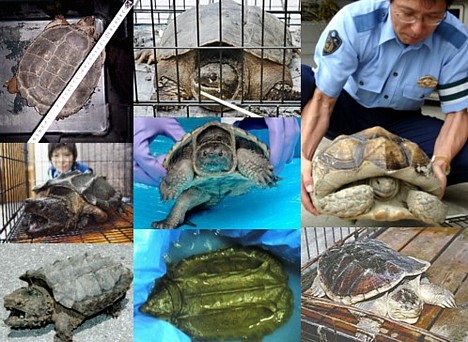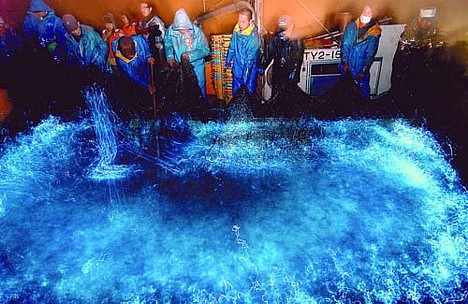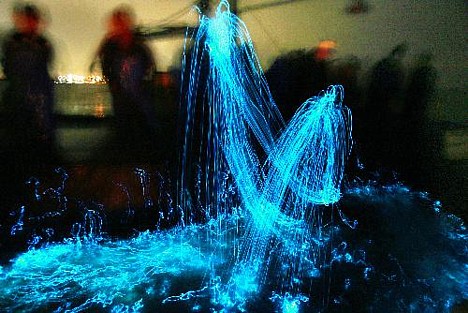Recently Japan has seen a dramatic increase in the number of news reports concerning foreign turtles on the loose. Hardly a day passes without a reported capture, leaving one with the impression the country is under full-scale invasion by an army of rogue turtles. The culprits are predominantly common snapping turtles (Chelydra serpentina) and alligator snapping turtles (Macroclemys temminckii), both of which find their way from the Americas to Japan as pets. Authorities are responding aggressively, incarcerating the miscreant terrapins and publishing their mugshots in the media. The photo below shows some of the most recent detainees.

Left (top to bottom): Common snapping turtle captured in Tsuyama (Okayama prefecture), alligator snapping turtle captured in Ueno Park (Tokyo), alligator snapping turtle captured in Tomigusuku (Okinawa)
Center (top to bottom): Common snapping turtle captured in Kameyama (Mie prefecture), common snapping turtle captured in a kindergarten swimming pool in Kobe, alligator snapping turtle captured 30 meters offshore at Nagasaki Seaside Park
Right (top to bottom): African spurred tortoise (Geochelone sulcata) captured in Nabari (Mie prefecture), common snapping turtle captured in Imizu (Toyama prefecture)










 "It?s dirty, but everyone is interested in poop. I wanted to give it a try," says Michinori Ueda, director of
"It?s dirty, but everyone is interested in poop. I wanted to give it a try," says Michinori Ueda, director of 

 Japanese scientists researching the prospects of long-term human settlements on Mars are dreaming up ways to address the challenges of Martian agriculture. At a recent meeting of the
Japanese scientists researching the prospects of long-term human settlements on Mars are dreaming up ways to address the challenges of Martian agriculture. At a recent meeting of the 

